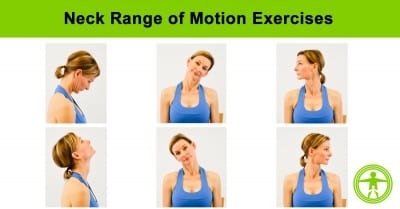
Do not try to perform the most difficult exercises if you are starting from a place of very limited mobility. First, every exercise has its own challenges, and you should adjust the difficulty based on your ability level. When creating a home exercise program for stroke recovery, it helps to keep a few things in mind.
#Range of motion exercises how to#
How to Create a Home Exercise Program for Stroke Recovery Thus, a home exercise program for stroke recovery is essential to keep improving. Therefore, it’s imperative to continue rehabilitation after sustaining a stroke on a regular and consistent basis. Many survivors only attend only one session per week, limiting the amount of repetitions they can perform during therapy sessions and thus limiting the amount of stimulation to the brain. While participating in outpatient therapy (like physical, occupational, or speech therapy) is helpful, it is often not enough time to practice to optimally engage neuroplasticity. That’s where the saying “practice makes perfect” comes from. The more a skill is practiced, the more the brain strengthens the neural pathways for that skill. Neuroplasticity is best activated through high repetition of exercises, or massed practice. When neural pathways in the brain become damaged or weakened after a stroke, neuroplasticity allows the brain to strengthen existing neural pathways and create new ones. Survivors that sustained a cerebellar stroke may experience balance issues and need more focus on core exercises, which tend to be bilateral movements (involving both sides).įortunately, many survivors can overcome the effects of a stroke and improve functions with the help of neuroplasticity, the brain’s ability to rewire itself. Depending on the area of the brain affected by stroke, survivors have different secondary effects, and their home exercise program goals should be adjusted accordingly.įor example, survivors that sustained a stroke in the motor cortex may experience hemiparesis (weakness on one side of the body) and need a home exercise program that targets one side of the body more than the other. The Benefits of Exercise At Home After StrokeĪ home exercise program after stroke allows survivors to improve mobility in the months and even years after discharging from therapy. This article will discuss the benefits of post-stroke rehabilitation, as well as the various types of exercises you can include in your home exercise program for stroke recovery. Fortunately, incorporating a home exercise program for stroke recovery can help keep the brain stimulated and encourage recovery to continue. However, this may not be enough to produce fast results. However, it is important to remember that PROM exercises cannot prevent muscle atrophy.After discharge from the hospital after a stroke, many survivors participate in outpatient therapy about once per week.

One of the primary goals of PROM is to counteract the detrimental effects of immobilization. PROM exercises are typically used where there is paralysis, when the patient is comatose, in the presence of a healing fracture, or if pain is elicited during an active muscle contraction.

Passive range of motion (PROM): usually performed when the patient is unable or not permitted to move the body segment, and the clinician, or family member, moves the body segment. AAROM exercises are used in the presence of muscular weakness, fatigue, or pain. The assistance may be applied mechanically, manually, or by gravity while the patient performs a voluntary muscle contraction to the extent he or she is able. The benefits of AROM exercises are outlined in Table 11-1.Īctive assisted range of motion (AAROM): performed when the patient needs assistance with movement from an external force because of weakness, pain, or changes in muscle tone. These include acute rheumatoid arthritis, significant pain or joint swelling, or if the symptoms are intensified with the exercise. The presence of a number of conditions requires caution with AROM exercises. Contraindications to AROM include a healing fracture site, a healing surgical site, severe and acute soft tissue trauma, and cardiopulmonary dysfunction. AROM exercises are used when the patient is able to voluntarily contract, control, and coordinate a movement when such a movement is not contraindicated. Active range of motion (AROM): performed by the patient independently.


 0 kommentar(er)
0 kommentar(er)
